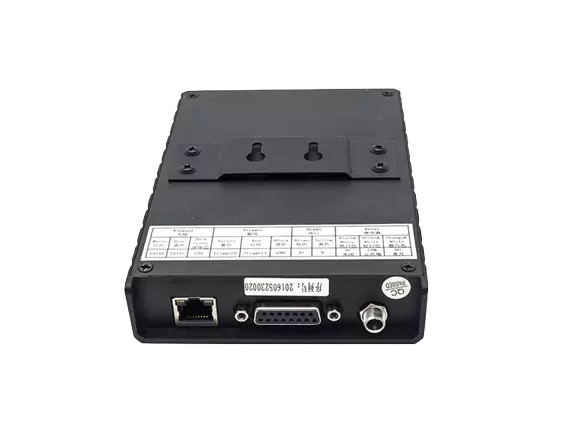With the rapid development of the Internet of Things (IoT) and smart logistics, RFID technology is increasingly used in asset management, supply chain tracking, warehouse management and other fields. As one of the core devices of the RFID system, the UHF RFID reader undertakes the important task of reading tag information and transmitting data. Faced with a wide variety of UHF RFID readers with different functions on the market, how to choose a device with stable performance, high cost performance and suitable for their own needs has become the focus of buyers.
This article will analyze how to choose a suitable UHF RFID reader from multiple dimensions such as the basic principles, key parameters, application scenarios and purchase precautions of UHF RFID readers to help you make scientific decisions.
1. What is an UHF RFID reader?
An UHF RFID reader is a device used to read and write UHF (usually 860~960MHz frequency band) RFID tag information. Compared with low frequency (LF) and high frequency (HF), the UHF band has a longer reading distance (generally up to several meters or even more than ten meters), faster data transmission rate and stronger anti-interference ability, so it is widely used in logistics management, warehouse inventory, access control system, industrial automation and other fields.
UHF RFID readers communicate with RFID tags attached to items through radio waves to achieve non-contact automatic identification and data collection, and are an important part of modern intelligent identification technology.

2. Key parameters to understand before purchasing UHF RFID readers
When purchasing UHF RFID readers, you must first understand their core technical parameters, because these parameters directly determine the performance, scope of application and final application effect of the equipment. Mainly include:
2.1 Frequency range
UHF RFID readers usually operate at a frequency between 860MHz and 960MHz. Different countries and regions have different regulations on specific frequency bands, for example:
China: 920-925MHz
United States: 902-928MHz
Europe: 865-868MHz
When purchasing, readers that support the corresponding frequency bands should be selected according to the actual use area to ensure legal compliance and optimal performance.
2.2 Reading distance
The reading distance is one of the most important indicators of UHF RFID readers, which affects the application scenarios of the equipment. Generally speaking, the reading distance of handheld readers is about 1-5 meters, and fixed readers can reach 7-15 meters or even farther.
The reading distance is affected by factors such as antenna power, tag performance, and environmental interference. When purchasing, the needs should be clear. For example, warehouse shelf management may require longer distance reading and writing capabilities, while access control applications require shorter distances.
2.3 Output power
The output power directly affects the reading distance and stability. The output power of UHF RFID readers is usually adjustable, with a maximum of about 30dBm (1 watt). The higher the power, the longer the reading distance, but the power consumption and heat generation also increase.
When choosing, you need to combine the actual environment and power regulations to avoid interference and safety problems caused by excessive power.
2.4 Antenna Configuration
UHF RFID readers can be equipped with built-in or external antennas. The built-in antenna is compact and easy to use on the move; the external antenna supports multi-directional and multi-angle coverage, which is suitable for fixed installation and large-scale scanning.
The gain and directivity of the antenna have a significant impact on the reading effect. The type, quantity and installation method of the antenna should be considered when purchasing.
2.5 Interface type and communication protocol
The interface determines the data interaction method between the device and the host system. Common interfaces include:
Serial port (RS232/RS485)
USB interface
Ethernet (Ethernet)
Wi-Fi or Bluetooth wireless connection
In terms of communication protocol, readers that comply with the EPCglobal Gen2 (ISO 18000-6C) standard are more versatile and have strong compatibility.
2.6 Adaptability to the working environment
Depending on the usage scenario, the reader/writer needs to have the corresponding protection level and environmental adaptability. Industrial application scenarios often require dustproof, waterproof and shockproof design. The higher the IP level (such as IP65), the stronger the durability of the equipment.
2.7 Power consumption and power supply type
Portable readers need to pay attention to battery life, while fixed devices require a stable power supply. Low power consumption design helps to extend the life of the equipment and reduce the cost of use.
3. Choose UHF RFID readers according to application scenarios
Different application scenarios have different requirements for the performance and functions of UHF RFID readers. Understanding specific requirements is the key to purchase.
3.1 Logistics and warehouse management
Requirement characteristics: long reading distance, need to quickly identify multiple tags, the equipment needs to support batch reading and strong anti-interference ability.
Recommended selection: Fixed UHF RFID reader with high-gain multi-antenna, support high-speed reading and data transmission, interface supports Ethernet, easy to integrate with warehouse management system.
3.2 Access control and identity recognition
Requirement characteristics: short reading distance, fast recognition speed, high security requirements.
Recommended selection: handheld or fixed reader, support security encryption protocol, flexible interface, compact appearance suitable for access control equipment.
